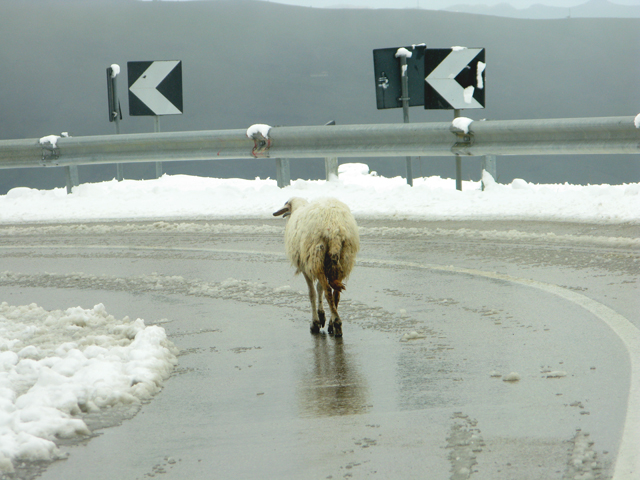 Davide points through the rain and mist to the giant bronze figure with the outstretched arms at the top of the mountain. With a wink, he says, “He must be cold …” Poor Cristo Signore della Montagna, doomed to spend the winter covered in snow while looking out for his flock. Sunny Brazilian mountains the Nebrodi ain’t, even in summer. It could be worse, though: at least he isn’t standing by the side of a motorway in Gateshead.
Davide points through the rain and mist to the giant bronze figure with the outstretched arms at the top of the mountain. With a wink, he says, “He must be cold …” Poor Cristo Signore della Montagna, doomed to spend the winter covered in snow while looking out for his flock. Sunny Brazilian mountains the Nebrodi ain’t, even in summer. It could be worse, though: at least he isn’t standing by the side of a motorway in Gateshead.
I see a streak of black and white out of the corner of my eye and give a surreptitious salute. Davide looks at me curiously. “Why do you keep doing that?” I giggle. Explaining superstitions to an engineer – someone who spends his days mired in facts and science – is a little embarrassing. I decide to just go for the jugular. “One for sorrow.” We’ve had the discussion about the magpie poem before, so this much he understands. I continue: “I should, as well as saluting, say, ‘Hello Mr Magpie – how’s the wife?’ – but I skipped that bit.” Davide looks sideways at me, the corners of his mouth twitching, as his eyebrows shoot up towards his hairline. “How’s the wife …?” I nod. “Yes. It’s to distract him, you know. From mischief? So he goes and looks for his wife rather than causing trouble.” Davide bursts out laughing. I join in – despite my actions, I am at least half logical and well aware of how ridiculous I sound. There’s no harm in covering all bases, though.
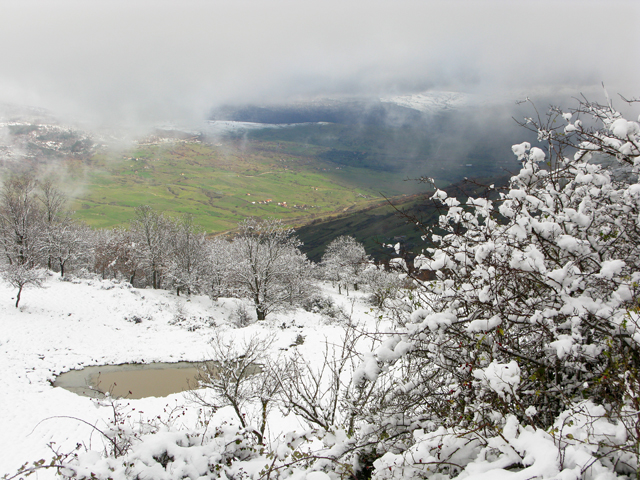
We wind up the mountain and past the sign welcoming all comers to Cesarò. So far, despite the snowy covering further up, all we’ve seen is rain. I’m gazing glumly out of my window when Davide gives a shout: “Kate! Did you see that?” I jump and look across at him. “What?” He’s grinning. “Snow. All over that car coming down the other way.” I squeak with excitement and bounce in my seat. Now I’m looking out for them, there are other good signs, too, such as a sandstone brick pavement covered in fluffy snow. Strangely, there’s nothing on the bricks; only on the mortar, creating a kind of reverse relief effect. The road, meanwhile, has a thick border of slush which graduates out from muddy water, to wet, coffee-coloured ice, to white snow punctuated with sparse footprints.
We climb further, out above the town. The rain starts, ever so gradually, to get thicker and whiter and the light changes until, without us quite realising when the rain stopped and the snow began, we are in a scene from a Hollywood Christmas movie. Thick, fat flakes fall on the car and the trees are laden with powdery frosting. The roads are no longer slush-splashed, but dolloped with snowdrifts. Previously untouched snow crunches and creaks under the tyres, and the light is so bright it’s blinding, despite the enveloping clouds. Davide glances across at me. “I’ve never seen snow here before. It’s usually higher.” He brings the jeep to a halt and puts on the 4×4 lock. “We may not make it to Monte Soro …”
A triangular cattle warning sign looms out of the cloud, its sharp red borders made fuzzy by their coating of cold, white powder. Many of the black and white poles which mark the edge of the road and dangerous corners are buried up to their necks. All that remains visible is their topmost red markers – like chilly noses – peeking out between their new white hats and coats.
We continue to climb. The snow comes at us in clouds, whiting out the view ahead; Davide turns up the wiper speed and I clap my hands, as excited as a small child to be making brand new tracks in fresh snow.
The jeep skids as we round a corner and my heart thuds in my chest as my hand slams out to brace against the door. Davide regains control within a second, but the thrill of exploration is now tempered with a sense of unease. From the look of the tracks on the road, only one or two others have been up here since the snow started in earnest; if we came off the road, how long would it be before help passed? I look down at my phone: it hasn’t had a signal since we climbed out of the top of civilisation, half an hour previously.
We drive on in silence.
The junction to Monte Soro is the only one for miles along this road. And when we reach it, it’s blocked by a knee-deep wall of snow, pushed aside as the snowplough barrelled on through to clear the pass. Portella Femmina Morte – the road that we need – is open only to walkers and the seriously snow-equipped type of off-road vehicle that’s currently doing hot dogs at the junction. It buzzes past us as we climb out of the car, chucking up cold, white plumes of powder as it goes. We walk in its tracks, sound muffled by the insulating layers of snow and clothing that surround us, and I drink in the strangeness of a landscape that I last saw on a misty afternoon in early September. Then, it was all warm browns and shiny greens covered in a fine silver gloss of water droplets; now it’s as monochrome as my unlucky magpies.
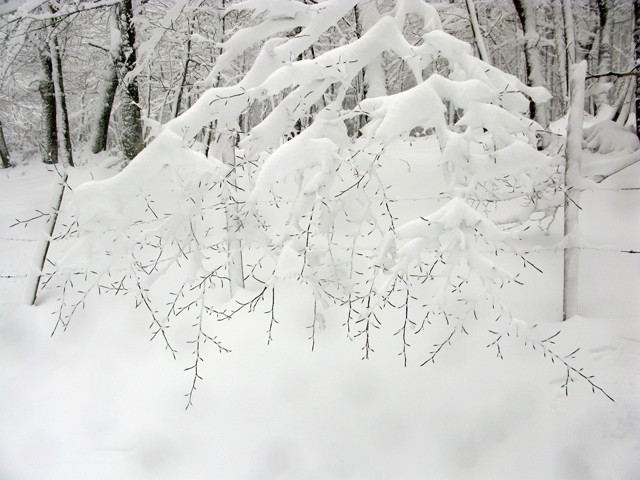
I’ve left my gloves in the car and after ten minutes I’m beginning to lose the feeling in my hands. We wade back through the snow, which has already started to cover our outward footprints, and climb into the car, where we peel off damp outer layers and turn up the heat to maximum. Davide turns the car around and we start to head back down the mountain; I pull off my walking boots and tuck my feet behind my knees to warm my frozen toes.
A large, bi-coloured bird flashes in front of us. I salute, but Davide smiles and shakes his head. He slows the car to a stop and nods towards the trees: it’s not a magpie, but a jay. He’s settled on a snowy branch, fluffing his feathers and giving us a wary, sideways look. Davide winds down his window and I lean across to take a photo – but no sooner do I move than the bird’s gone in a swoop of brown wings and flash of blue. Better luck next time, eh.

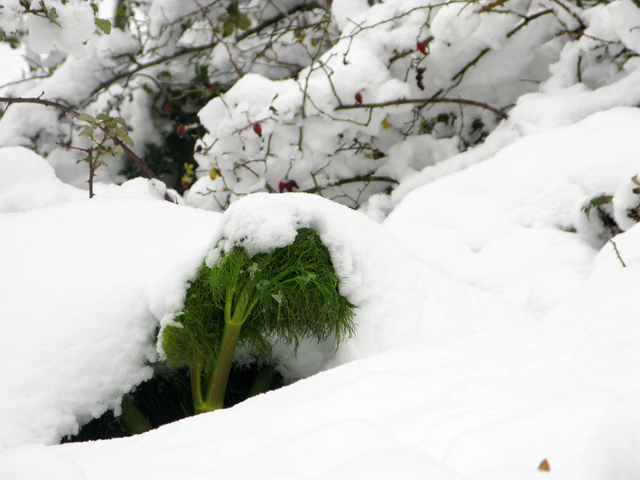
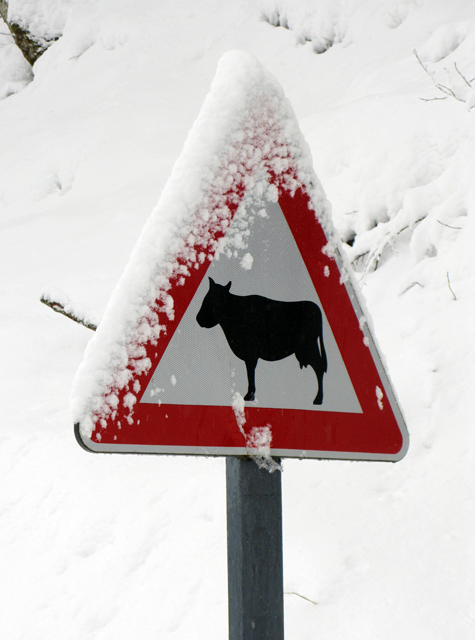
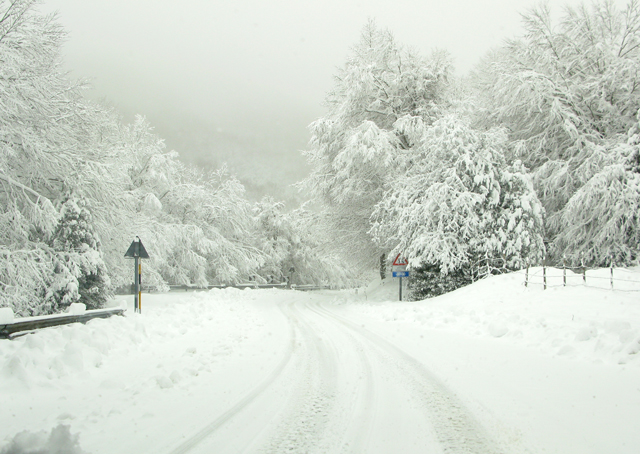






Pingback: Australia Editor Update: Around the Belle-es-sphere